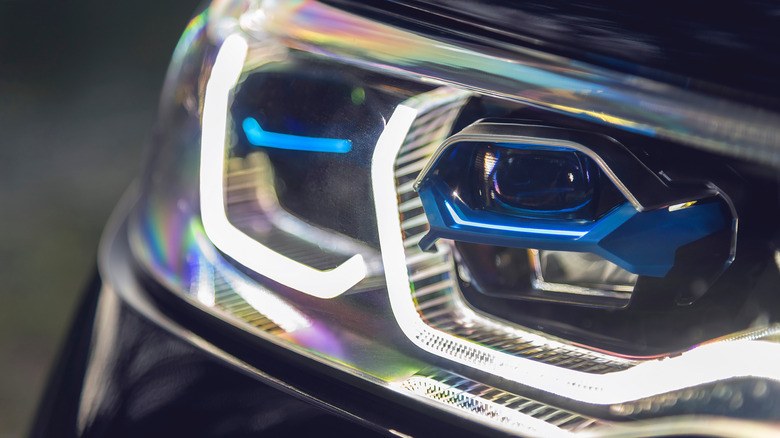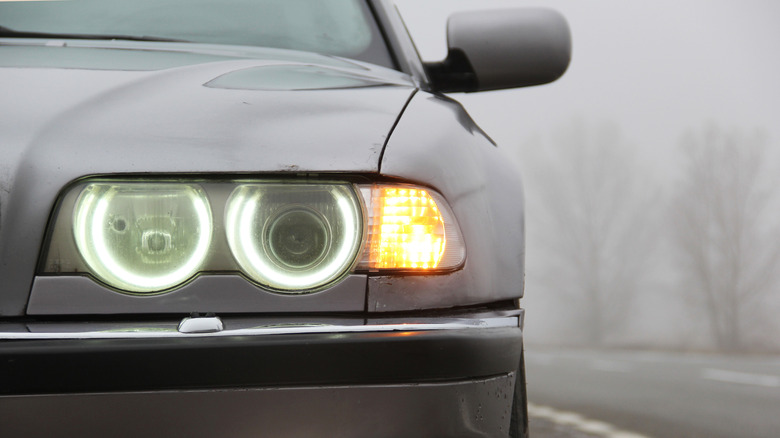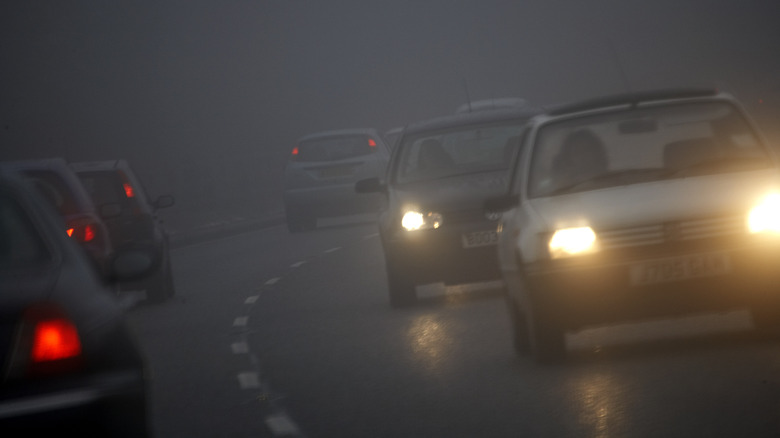
Daytime running lights (DRLs) are not practical or legal alternatives to your car's headlights. The DRLs are low-intensity LED lights located at the front of a vehicle, typically positioned near or around the headlight housing. They are much brighter than the park lights, but are not as bright as the headlights. However, they glow brightly enough to make your car more visible to other drivers, pedestrians, cyclists, and other road users during the day, especially during cloudy, foggy, or dusky conditions.
In most vehicles, the DRLs will turn on when the engine is started and will automatically turn off when the headlights are engaged. There's no learning curve for using the DRLs in a modern car, as they turn on automatically after turning the key or pressing the engine start button. Once activated, the DRL warning light on the instrument panel will illuminate, alerting the driver. Some cars have a separate option to turn off the DRLs under certain conditions, such as when the vehicle is parked or idling with the engine running.
Studies show that vehicles with DRLs are 5% less likely to be involved in daytime fatal crashes than vehicles without, and the risk of daytime fatalities in single vehicle crashes with cyclists, pedestrians, and non-motorists is reduced by 12%. As it turns out, the DRLs in a modern car are not merely a design feature, but an integral part of driving safety.
Read more: 9 Cheap Cars That Look Expensive
Are DRLs Ideal For Nighttime Driving?

No, the light intensity of DRLs is not enough to properly illuminate the road when driving at night. They may help improve visibility and reduce the risk of accidents during the day, but it's a different story when the sun sets. Daytime running lights are not substitutes for headlights, whether your car has HID or LED headlights. Besides the fact that DRLs are not powerful enough to pierce through dark highways, the taillights will remain off even when the DRLs are working, and the taillamps will only illuminate after the headlights or park lights are on.
As you may be aware, it is illegal to drive a car with non-working (or non-illuminated) taillights, especially at night or during adverse conditions such as poor weather or thick fog. Moreover, DRLs point forward rather than downward like the headlights and fog lights. The orientation is to improve your car's visibility to other road users, but DRLs are insufficient for illuminating the road like fog lamps and headlights.
Do U.S. Laws Require Vehicles To Have DRLs?

Despite NHTSA studies showing that DRLs help reduce crashes and accidents, the U.S. government does not require road cars to have daytime running lights. However, Canada has mandated DRLs for all new vehicles since 1989, and the European Union has made DRLs mandatory for all new cars, trucks, and vans sold since 2012. Although not required by U.S. law, you can legally install daytime running lights on your older vehicle if you are willing to incur the additional costs.
Safety considerations aside, your old beater might look cooler and more modern with DRLs, but it ultimately comes down to personal preference. A typical DRL kit costs anywhere from $50 to approximately $200, and the installation typically takes three to four hours of labor, depending on the vehicle's make and model. We highly recommend hiring a professional for the installation when retrofitting a DRL system to a car. However, you can save money if you do it yourself, provided you're handy with tools, electrical work, and mounting.
Want the latest in tech and auto trends? Subscribe to our free newsletter for the latest headlines, expert guides, and how-to tips, one email at a time.
Read the original article on SlashGear.












